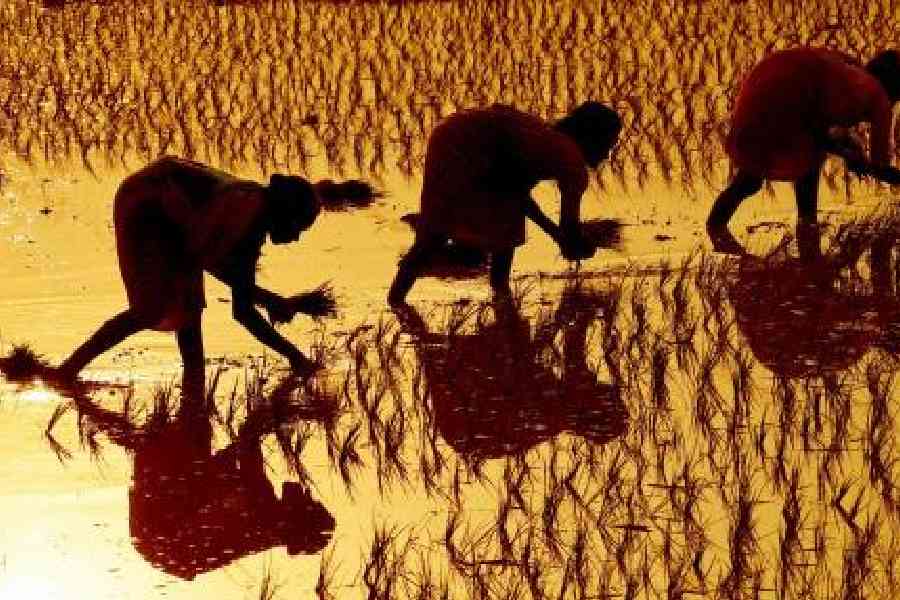Bok name- FARMERS PROTEST! A MOVEMENT FOR OUR TIMES
Author- Namita Waikar
Published by- Yoda
Price- Rs 699
The farmers’ protests that started in August 2020 against the three contentious farm laws — passed surreptitiously as the country reeled under the tragic shadow of a Covid-imposed lockdown in September of the same year — gripped the nation in its feverish and subversive clasp. What ensued was one of the largest social mobilisations across the world, continuing for over a year, forcing the government to repeal the laws and the prime minister to seek a nationwide apology. Not only did the movement become a springboard for the farmers to assert their rights but it also shook off the morbid fear of majoritarian autocracy that had slowly permeated into the country.
In her new book, Namita Waikar, the managing editor of PARI, uses the primer of the 2020-21 farmers’ protests to take a deep dive into the long historical trail of agrarian crisis in the country. She deftly weaves in interconnected issues that impact agriculture, such as the politicisation of natural resources, including water; the impact of unrestrained pesticides on nutritional security; the pitfalls of the Green Revolution; and the practical challenges of and the meagre earnings from organic farming.
The conditions in agriculture — a sector that contributes 18.2% to the economy and employs 42.3% of the population — are far from normal. More than 85% of India’s farmers are small and marginal agriculturalists, owning less than 2 hectares of cultivable land that is insufficient to put two square meals on the table. The downward trend in suicide rates should not be thought of as a silver lining but as a bureaucratic gimmick. As P. Sainath tells us in his critical report, “The Slaughter of Suicide Data”, the real culprit is the reclassification of suicide data that distorts the true picture.
To further accentuate the misery of farmers — and give an upper hand to capitalists — the government enacted the three farm laws. Through interviews of farmers, arhatis, and protest leaders, Waikar strips away the seemingly progressive, farmer-friendly veneer of these legislations to reveal their incompetent, flawed, crony-capitalist underpinnings. Take, for instance, the idea of the free market, which the first and the most contentious law sought to promulgate. The stated aim was to allow farmers greater autonomy over their produce and put a tight leash on middlemanship; however, this laissez-faire principle would have dismantled the State-owned Agricultural Produce Market Committees and brought in private players who would buy produce at incidental rates, bypassing the safeguard of a pre-decided minimum support price. Moreover, past precedents, either in the form of decentralisation of the sugar industry in 1998 or experimental attempts in Bihar in 2006, did not result in improved economic security for farmers.
Waikar also draws attention to the political ramifications of the protest, examining how the composition of protest sites in Singhu and Tikri differed in terms of caste and class privilege, how the agitation managed to mobilise sections of the Indian middle class, and how the presence of women, Dalit, and landless farmers played an important strategic role in mounting the resistance. But she remains guarded in her approach here, chronicling events and citing facts but never tying them together with a strong, analytical, connective tissue. As a result, the narrative about the farmers’ protest feels observational rather than analytical.
The book is at its most powerful when it offers a nuanced portrayal of the lives of women farmers. As men migrate to cities in search of lucrative work, women are left behind to shoulder the full burden of agricultural labour — on top of their already demanding household responsibilities. This doubling of duties rarely translates into economic empowerment or improved living conditions. Waikar draws attention to the plight of sugarcane cutters in Maharashtra where each ‘koyta’ — a working unit typically comprising a married couple — is formally hired as a pair, yet the real burden disproportionately falls on the women. They have to wade through hunger pangs, sleepless nights, and abuse at the hands of zamindars, all the while heeding to their husbands’ tantrums.
One of the primary issues, which Waikar repeatedly underscores, is the legal definition of a farmer. Waikar notes that the prevailing notion of a farmer — equating farmers with landowners — marginalises a substantial segment of tenants, women, cultivators, and agricultural labourers and expunges them from the ambit of social welfare schemes. This is particularly stark in the case of women farmers: despite agriculture employing 65.1% of the total women’s workforce, the government data fail to label them as ‘farmers’.
The mainstream media has often failed to adequately cover farmers’ issues— a gap that gave rise to alternative publications at the time of protest like Trolley Times. Farmers Protest! addresses this critical lapse by foregrounding the narratives of the protest and making a critical comment about the very nature of our capitalist society where profit is prioritised over lives and livelihoods.

